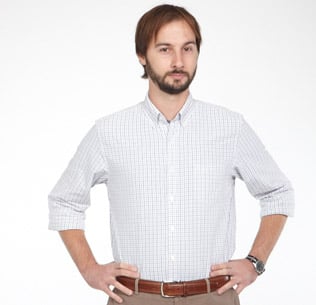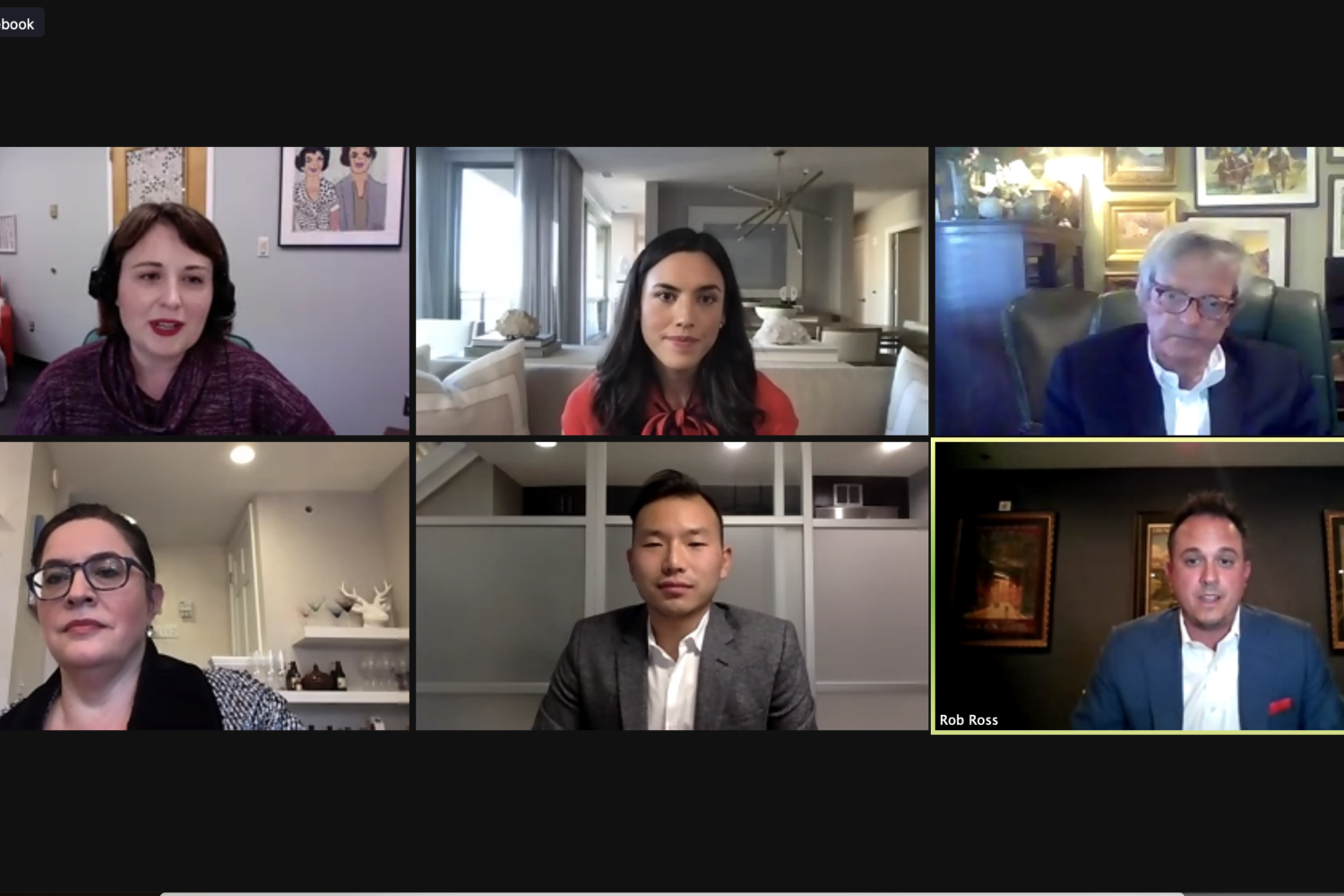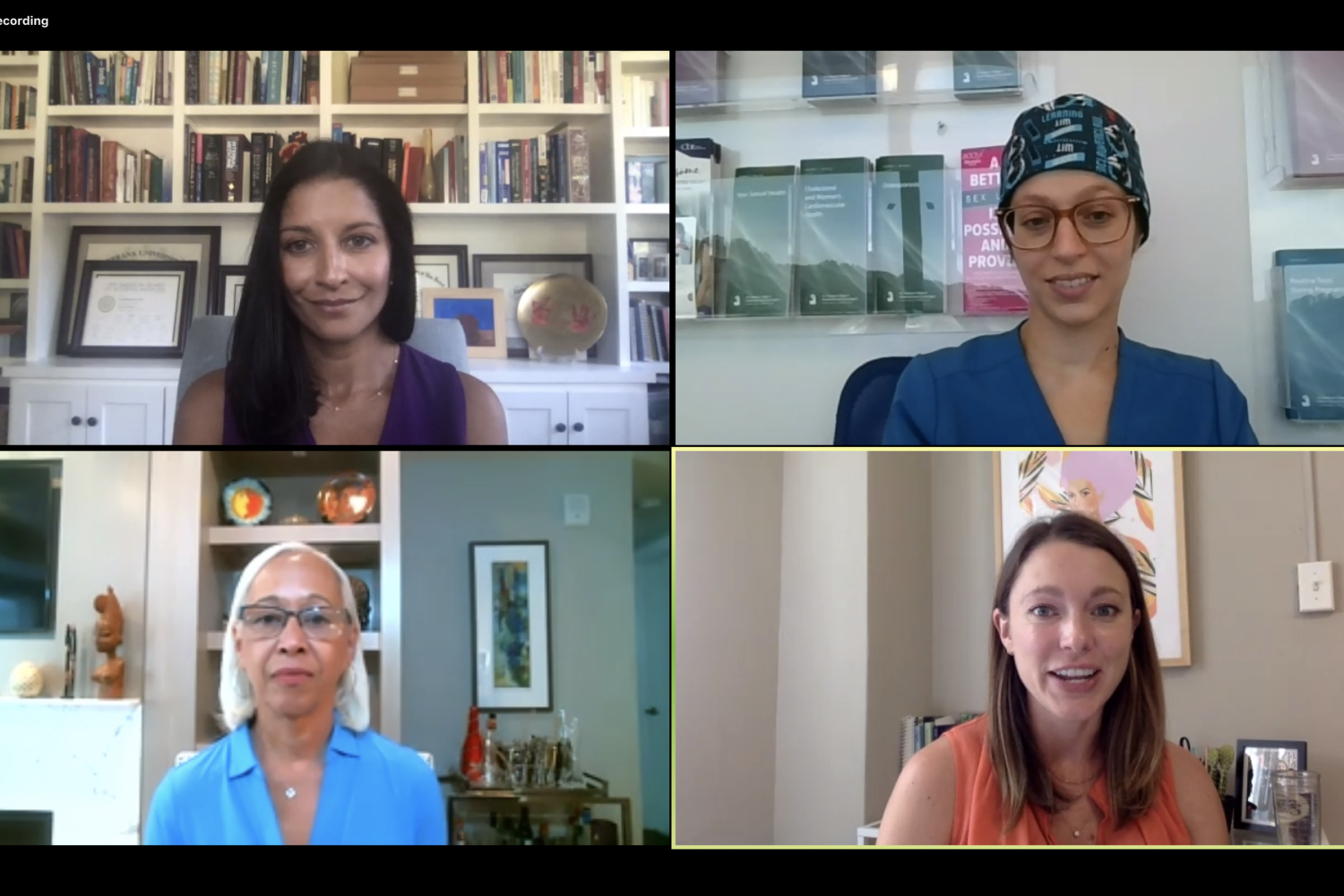To his colleagues at the Environmental Protection Agency, John Beale was always a man of great import. Beginning in the early 1990s, he enjoyed one policymaking triumph after another, eventually establishing himself as a towering figure within the agency. He also possessed a certain mystique. It was an open secret in the office, yet only whispered: Beale led a double life as a covert agent for the CIA.
Wednesdays he was often a no-show at the EPA, marking the absence in the office calendar with a cryptic descriptor: “D.O. Oversight.” It was shorthand for his duties with the CIA’s Directorate of Operations, the division that sent spies on clandestine missions. Sometimes Beale’s EPA managers didn’t see him for weeks or months—when he took off for Pakistan after getting word that a fellow CIA agent was being held captive by the Taliban, for example. He was a man apart to them, a Vietnam vet with a stunning intellect who jet-setted around the globe to protect America. They kept his secret safe and didn’t ask questions.
Beale announced his retirement from the EPA in 2011. More than a year later, an employee noticed something strange on the payroll: Beale, then 63 years old, was still drawing a salary.
Evidence of the discrepancy soon made its way to Mark Kaminsky, a special agent with the agency’s Office of Inspector General. Kaminsky had been an EPA investigator for two years and thought he knew a typical time-and-attendance fraud case when he saw one.
But there was nothing typical about Beale. When Kaminsky first approached him last year about the peculiarity, Beale acted arrogant and became dismissive. He refused to answer any questions that might compromise his classified work and lawyered up.
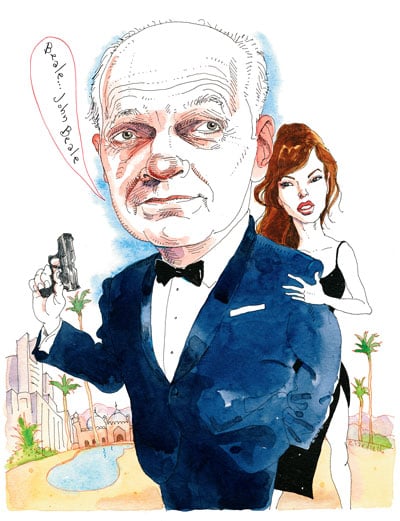
Among Beale’s staff, Kaminsky found unwavering devotion. “He was known as the golden child, the go-to man,” the investigator says. “Everybody who had contact with him had nothing bad to say about the man.”
Kaminsky knew how to spot a liar. Before arriving at the EPA, he had spent a decade in federal law enforcement. As an air marshal, he’d helped the FBI interview suspected terrorists after 9/11, and he knew the “tells” that gave away the truth. Kaminsky could see something wasn’t right.
He dug deeper, until he’d boiled the case down to a simple question: How could John Beale be in two places at once?
• • •
The “golden child” of the EPA had never intended to stay in Washington.
He’d come to help craft crucial amendments to the landmark Clean Air Act of 1970. The job began in 1988, and he was good at everything it entailed: negotiating with EPA attorneys and, as a liaison to the White House, keeping President George H.W. Bush’s staff abreast of the proposed changes.
An old friend, Robert Brenner, had first approached Beale with the opportunity. The men had been classmates at Princeton in the 1970s when Beale was working on a master’s in public affairs while simultaneously studying at New York University for a law degree. Beale had come east from California, where he’d used the GI Bill at UC Riverside after a stint in the Army in the early 1970s.
Brenner worked for the EPA’s Office of Air and Radiation, which was responsible for regulating pollution under the Clean Air Act. He thought his buddy John Beale would be perfect for the job of writing amendments to the law.
Beale had made a living dealing with regulatory agencies such as the Federal Election Commission and the Securities and Exchange Commission at his three-partner law firm in Lake City, Minnesota, a town of 5,000 where his mother had grown up. He was good at thinking strategically. Plus, he’d interned for a US senator while in college, so he could likely hold his own on the Hill.
Beale’s parents were devoted public servants—his father a minister, his mother a nurse—and at the EPA he saw a chance to do meaningful work, too. Because his federal salary was small compared with the paycheck he was drawing in the private sector, he expected to leave the government after his job as a consultant to the EPA ended.
But Beale’s reputation as a skilled negotiator meant that his portfolio at the agency grew quickly. “I found him to be one of the most capable people whom I knew during my career at EPA,” colleague Aron Anthony Golberg, who spent more than 20 years there, would later observe. “I had absolutely no reason at all to question his trustworthiness or sense of ethics.”
Beale made such an impression that in 1989 the EPA made him a policy analyst—a permanent, career federal employee. The agency submitted its legislation to Congress, and Beale began working closely with lawmakers to write the proposals into law. At year’s end, he accepted an EPA Gold Medal for Exceptional Service—its highest honor—for crafting the complex policies in just two years.
Beale was an employee the EPA didn’t want to lose. To ensure he wouldn’t quit, his bosses bestowed on him a retention incentive, a temporary bonus worth 25 percent of his annual salary for three years. It was a rare privilege, normally reserved for scientists and others with hard-to-come-by technical skills.
He took on leadership roles in other crucial agency initiatives, becoming a leader of the US delegation to a convention on international pollution agreements and traveling across the country to negotiate with automakers as part of the agency’s effort to set stricter standards for car emissions.
EPA employee Lydia Wegman, who worked with Beale until the mid-’90s, would later laud his charisma and gift for mastering complex issues: “He could . . . explain them clearly and forcefully to others both within and outside EPA, and marshal persuasive arguments in support.”
• • •
There were always rumors about Beale floating around the EPA clean-air office. That this intelligent, important man in their midst was often traveling internationally for the agency and conducting confidential meetings on the Hill prompted coworkers to ask jokingly if he was a secret agent.
He’d shake his head and cluck, “Well, if I told you anything, I’d have to kill you.”
In 2000, after 12 years with the agency, Beale started skipping work on Wednesdays for his “D.O. Oversight” missions. By this time, he’d been promoted to senior policy adviser, a position below the Senior Executive Service level but higher than a GS-15. For a while, and despite continuing to draw his EPA pay on those days, no one asked about his absences. He took nine of the days in 2000 and 15 in 2001.
The first time anyone broached the subject was that year, when Jeff Holmstead, then assistant administrator of the Air and Radiation Office, spoke with Beale about his “D.O.” Wednesdays. Beale revealed that the joke was no joke: He’d worked for the three-letter agency earlier in his career, and it was now calling him back for a secret assignment. He would have to take a half day off here and there to help out. Maybe a few whole days, too. Holmstead, who’d known Beale during his time working on the Clean Air Act amendments, agreed to the arrangement.
In 2002 “D.O. Oversight” would appear in Beale’s calendar 22 times. The next year 14 times, and the year after that 18. In 2005 his covert operation took him away for 25 days. At times he’d make coy references to big international news—a bombing in Pakistan, violence in India—and insinuate that the CIA had him working on it. To colleagues who saw Beale as an outstanding employee, it made sense that agencies more selective than the EPA would put his talents to use.
Beale also let drop to coworkers that he’d fought in Vietnam, which dovetailed with his secret-agent identity. In 2002 he divulged to his boss that he’d caught malaria in the jungle battlefields three decades earlier. The condition apparently made his trek from an EPA parking lot difficult. The agency gave him a parking space closer to his office, subsidizing the spot at a cost of $200 a month.
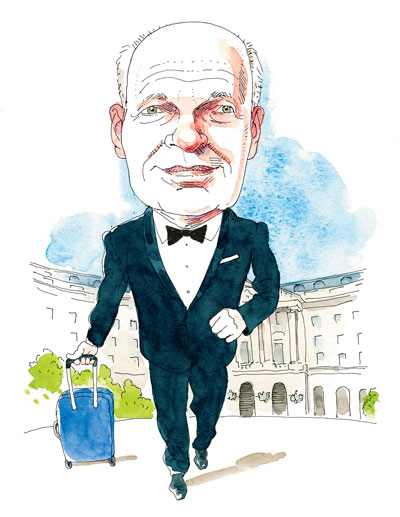
As Beale’s responsibilities with the CIA expanded, his work at the EPA took on a more abstract form. In 2005 he pitched the EPA a long-term research project on the future of environmental regulation, which would require trips to California. His bosses green-lighted the endeavor and let him take the reins with little supervision. Over the next two years, he made five trips to Los Angeles, charging the EPA $57,235 for hotels and airplane seats in first class—necessary because of a back injury.
The 2008 election year brought new CIA duties for Beale. He told his EPA managers he’d been assigned a multi-agency “executive protection” project involving security for political candidates. The assignment kept him away from the EPA between June and December, a full six months.
Beale returned to his EPA office in January 2009 and began to spend more time there. Between President Obama’s first inauguration and May 2011, he took only nine “D.O. Oversight” days. The new administration had renewed attention on environmental issues. Beale had work to do.
• • •
Everything was going so well. So well that when Beale decided retirement was upon him after 23 years at the EPA, he threw a party.
It was September 22, 2011, on a yacht cruising the Potomac. Beale and two coworkers paid for the celebration. One was a colleague from his early days who was also planning to retire, and the other was Brenner, his Princeton classmate and EPA colleague. Beale called the group the “three musketeers on the Clean Air Act.”
More than a hundred EPA employees and guests were onboard, including Beale’s boss, Gina McCarthy, the official who headed the Air and Radiation Office and whom Obama would later pick to head the agency.
Seven weeks after the cruise, Beale told McCarthy that he’d banked some vacation time and would be using it to fill his final months at the EPA. His official retirement, therefore, wouldn’t begin until around January or February 2012.
He went off the radar after that, and everyone assumed he was retired.
But in November 2012, more than a year after the party on the Potomac, an HR employee went to McCarthy with cause for concern: Beale was still drawing a paycheck for his full salary of $206,000, including the 25-percent retention bonus that was supposed to be temporary—years after the incentive should have expired. Beale was making more than McCarthy. More than anyone at the EPA, actually. He had become the highest-paid employee in the agency.
McCarthy sent him an e-mail asking after him. “Maybe we should reconnect so you can catch me up on your plan,” she wrote.
“Gina, thanks for your note, and as usual, your timing is excellent. I just got back into the country from a too long trip yesterday,” Beale responded on Election Day 2012. “Tonight’s outcome will have a significant impact on those ‘Plans’ of mine.”
Beale seemed to be saying that his obligations to the CIA—and whether he merited a future government paycheck—would be determined by that night’s election results.
A few weeks later, he e-mailed McCarthy with an update: “Today is my last day of what I consider substantive work in the government. I still have to spend some time . . . out processing and being debriefed.”
Beale had offered to swing by his boss’s office to discuss the situation, and they’d set up a few dates, but McCarthy always seemed to reschedule and put him off. Then, just before Christmas, a Homeland Security detailee approached Beale. The EPA’s liaison to the intelligence community, he told Beale he couldn’t find any official records on Beale’s CIA work. Could Beale get the name of a contact person at the agency?
Beale said he’d work on it. It occurred to him then that there was a reason why McCarthy was always postponing their meetings.
When the two finally met in January 2013, McCarthy told Beale outright that the EPA needed the CIA’s verification of his employment. A document, a phone call, anything. He said he’d get something soon.
But the next month, he returned empty-handed. “Gina, the agency’s not going to acknowledge what I’ve been doing,” he said.
“Well,” she told him, “that puts you in a really bad position, doesn’t it?”
• • •
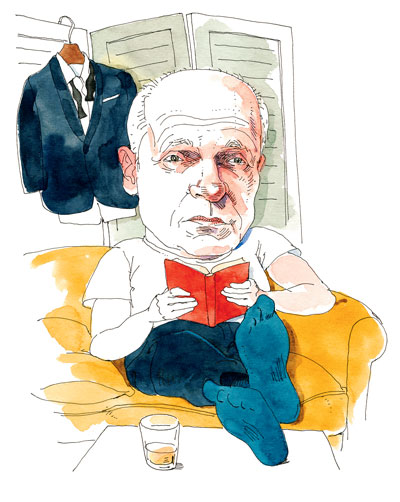
Mark Kaminsky, the investigator for the IG, was determined to get to the bottom of the mystery when Beale’s file landed on his desk in February 2013. It soon became clear that the case was special.
First, Kaminsky faced the difficult task of separating the man from the myth. Despite his prolonged absences, Beale was still a powerful figure inside the EPA. He inspired allegiance in his coworkers, who knew they could count on him to get even the toughest jobs done. “Yeah, he wasn’t around often, but when we needed him, he stepped up,” one of Beale’s colleagues told Kaminsky.
His superiors, too, respected him. “Even Gina McCarthy, when we interviewed her, stipulated that he was one of the best managers she’s ever had,” Kaminsky says.
An interview with the man himself added to the enigma. Beale’s persuasive manner was on full display when Kaminsky first questioned him. “He was confident in that meeting,” Kaminksy says. “Very confident, and I would say somewhat arrogant.” Beale invoked his right to an attorney, and the questioning stalled.
Con men usually lead double lives, and the spaces left between fact and fiction are where investigators make their case. Kaminsky’s task was to scour the hard evidence and look for gaps hidden in minutiae. Phone records and e-mails. Interviews with 25 of Beale’s colleagues.
Kaminsky stitched together information from a collection of sources, using the same methods he’d learned while tracking terrorists. Finally, after Beale balked at questions, Kaminsky handed over the dossier he’d amassed to the US Attorney’s Office. A federal prosecutor presented Beale’s lawyer with the file—which included phone records showing Beale stateside, at home in Arlington, at times when he’d claimed to have been overseas—and asked that crucial question: How could John Beale be in two places at once?
This time, authorities got the response they wanted: He was ready to talk.
Kaminsky already knew what Beale would say. Kaminsky had worked in intelligence as a US Marine at the beginning of his career. He knew how intelligence agents conducted their business. They didn’t talk about it over e-mail, as Beale had done.
Either way, Kaminsky had the trump card. He had finished the most obvious legwork, doing seemingly what no one at the EPA had contemplated for more than a decade. He called the CIA.
John Beale had never worked there.
• • •
It wasn’t supposed to get this out of hand.
That’s what Beale would say later in a sworn deposition with the House Oversight Committee in Congress.
In his early days at the EPA, when office staff would bat around the playful rumors, “I would laugh it off,” Beale said on Capitol Hill. “I mean it was a—it was a joke.”
Until that first “D.O. Oversight” Wednesday.
“I took advantage of the rumors,” he admitted.
The ruse began as a way to make himself feel more important. Beale had grown up without much money in Minnesota, his father’s minister salary always spread thin. The family moved twice to follow his dad’s church jobs—first to Connecticut when Beale was nine, then to California in the middle of high school. The second relocation was difficult, having to leave friends and adapt once again to a new environment.
Beale was smart. He won scholarships and took odd jobs to pay his way through high school and college. But he was also insecure. Last year, a therapist helped him recognize that these insecurities fed his alter ego. The lies became an addiction.
“I use the word ‘addiction,’ but I don’t mean it in the sense of a disease,” Beale said in his deposition. “I mean it in the sense you get kind of a rush out of this or an excitement about manipulating people or convincing them of something that’s not true.”
And like most addicts, he lost control. A Wednesday here and there became six months of leave for “executive protection.”
“It’s not a case where I sat down on a given Monday and said, ‘Oh, I think I’ll take six months off and steal six months of time from the EPA and the taxpayers,’ ” Beale said. “I think it’s one of those things that just started and—and grew, and I didn’t check it when I should have.”
Kaminsky uncovered firsthand evidence of how all-consuming the lie had become. Scouring Beale’s phone and e-mail records, he saw there was no part of the man’s life that hadn’t absorbed his espionage fiction.
“He lied across all aspects of his life,” says Kaminsky, who even contacted a psychologist friend with questions about what makes a sociopath. “You normally don’t see that. A criminal usually is not lying to everyone. But John Beale was.”
Even to his wife. Beale told Kaminsky he’d lied to her since 1994 about being a CIA agent. The investigator saw, in e-mails between the couple, that their relationship appeared otherwise normal—mostly they chatted about mundane things like gardening. “But there was a very consistent blanket of deceit,” Kaminsky says.
• • •
How did Beale get away with it?
When he finally sat down with Kaminsky and the federal prosecutor, they saw a very different man from the one at the first meeting. “He was extremely humble,” Kaminsky says. “He was anxious to explain his story and the why of it all. Why he did this.”
Beale proceeded to walk investigators through a decade of falsehoods, from the small lies to the colossal deceptions.
He never had malaria and never fought in Vietnam. But he did spend two years stateside as a medic in the Army, where he treated people with malaria, so he knew the symptoms. That helped him convince his manager that he had it and get the subsidized parking space. His coworkers also believed the lie. “One person we interviewed even told us that their dad had malaria and said it looked like Beale did, too,” Kaminsky says.
The EPA “research project” that took Beale to Los Angeles five times was really a smoke screen for visiting his parents in Bakersfield, two hours away. Yet his travel vouchers were barely reviewed. Officials didn’t question his expenses—they were approved laterally, by a peer instead of a manager. “Because of where he sat in the organizational structure, there were no questions,” Kaminsky says.
• • •
Beale’s off-the-charts $206,000 salary, inflated because of the 25-percent retention bonus that never expired, was more than allowed under law. An Inspector General’s report published last year faulted a lack of internal controls at the EPA—there was no automatic stop on the bonuses after the designated allotments were distributed.
In the same report, the IG revealed that these pay issues had been brought to the attention of Beale’s office as early as July 2010. Yet managers believed that the discrepancy was a human-resources matter and tossed it back, causing it to languish for years.
Beale could have stopped his fraud after the flashy “retirement” cruise down the Potomac. Could have done what he said he’d do: take some vacation, retire, and live off a $3,600-a-month pension. No more deception. Just walk away knowing that, for more than a decade, he’d fooled everybody.
But that wasn’t enough. He exploited the office’s payroll system, under which a low-level assistant entered his time for him in his absence. According to Kaminsky, Beale probably told this timekeeper that his CIA work was keeping him on the books. There was little oversight for individual time sheets: a “select all”-type function allowed managers to approve groups of the sheets simultaneously. Beale quietly collected a paycheck for months, until eventually it caught McCarthy’s attention.
Beale and Kaminsky counted up how often he’d used the CIA guise to skip work since 2000. The grand total: approximately 2½ years.
Investigators later put dollar amounts on his crimes: $437,901 in fraudulent retention bonuses, $58,127 for the “D.O. Oversight” absences, $8,000 for the parking spot, and so on. Altogether, he cost taxpayers $886,186.
Beale wasn’t paying off huge debts and didn’t live a lavish life. At one point, investigators asked him if he had a secret second family and used the time to visit them. No, he told them.
On September 27, 2013, he pleaded guilty to felony theft of government property. Three days earlier, Beale had given the court a certified check for the entire $886,186, as if he’d never spent a dime.
• • •
Beale was looking at 30 to 37 months in prison. James Smith, the federal prosecutor, wanted the judge to come down hard on Beale. “The business in our town is government,” he said at Beale’s sentencing in mid-December. Without a harsh penalty, Smith argued, “others might be tempted to become the next John Beale.”
Much had been made about how Beale’s fraud symbolized waste in government, further demonizing a federal workforce in an age of austerity. In a House Oversight Committee hearing on October 1—day one of the government shutdown, when hundreds of thousands of public servants suddenly found themselves without a paycheck—Republicans excoriated Gina McCarthy, who had ascended to the EPA’s top job despite the Beale debacle.
Alisha Johnson, a spokeswoman for the EPA, says that upon discovering the hoax, the agency has closed some of the bureaucratic loopholes that Beale was able to exploit. The 25-percent retention bonus is now subject to an automatic review before renewal. The EPA is also deploying a system in which managers approve timecards individually instead of in bulk and is starting semiannual reviews to ensure that the cap on salaries isn’t exceeded.
Perhaps the most unexpected fix preceded Beale. Six years ago, according to the IG’s office, it became US policy that anytime the CIA recruits someone from another agency, the CIA director must inform the head of that agency and its general counsel. In other words, the intelligence community actually does the type of cross-agency recruitment Beale was supposedly privy to.
“I own this—this is on me,” Beale said to the judge at his sentencing in a low, gravelly voice. Even with his shoulders stooped, he looked tall, commanding, important. He said he was ashamed that he’d sullied the idea of public service, betraying the trust taxpayers put into the system. “I’ll carry that with me the rest of my life.”
The judge asked the question on everyone’s mind: What possibly could have occupied his time—2½ years of absence from work? What was he doing?
“Exercising,” he said.
Doing house projects.
Beale told investigators he would usually get some reading or bicycling done, too.
There it was. John Beale lied for more than a decade and spent the spoils of his charade as anyone else would spend a lazy Sunday.
The judge gave him 32 months.
• • •
The oral history of Beale’s covert exploits was passed from person to person. And to each it made sense. The force of his personality made people inherently trust him, even without any evidence. They believed him, perhaps, because they wanted to.
“For a lot of years, I had done the kind of work for EPA or at EPA that I was and am very proud of,” Beale himself said at his deposition, “and I had earned a reputation for being very competent, very skillful, very truthful, and very honest.”
For some, his mystique—potent as it was—lingers. A few weeks after Beale’s guilty plea, Kaminsky reinterviewed a few of Beale’s colleagues. He found some still intractable.
“Even after showing them the evidence, showing them John Beale’s statement, they told me, ‘I hear what you’re saying, but he’s just taking one for the team.’
“They still believed him.”
Research editor Michael J. Gaynor can be reached at mgaynor@washingtonian.com. This article appears in the March 2014 issue of Washingtonian.


